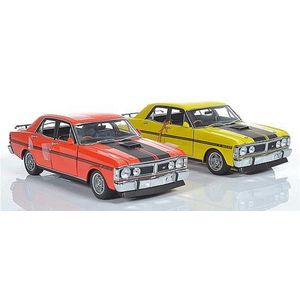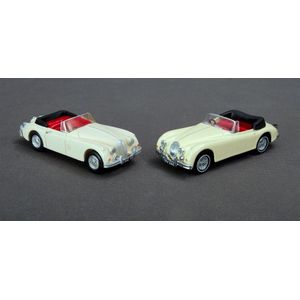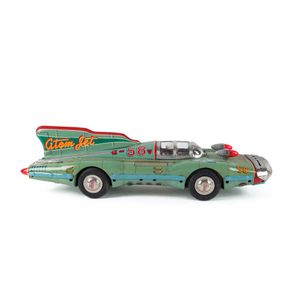Yonezawa Atom Jet Racer: Massive Tin Friction Toy Car
Yonezawa 58 Atom jet Racer race car tin friction space toy, circa 1958 huge size (length 69 cm; 27 inches) with an enclosed cockpit surrounded with nickel plated cage frame for added protection of the driver, large hard rubber tires that have nickel hubcaps, stamped into the hubs is 'Atom'. the two front hood lights combined with the three rear 'Jet Flames' add to the dramatic styling and quality. the undercarriage of this tin friction car is also highly lithographed with 'Atom Jet 58' and five different access panels to the engine. Quite spectacular; believed to be the largest tin friction toy car ever created by the Japanese toy industry.
You must be a subscriber, and be logged in to view price and dealer details.
Subscribe Now to view actual auction price for this item
When you subscribe, you have the option of setting the currency in which to display prices to $Au, $US, $NZ or Stg.
This item has been sold, and the description, image and price are for reference purposes only.
- Friction Motors in Toys - A friction motor, also known as a push and go is a type of motor that uses friction to create motion. It is commonly found in toys, particularly in vehicles such as cars and trains. The motor works by using a spring-loaded mechanism that is activated when the toy is pushed or pulled along a flat surface. The movement of the toy causes the friction between the wheels and the surface to turn the gears inside the motor, which then propels the toy forward.
Friction motors are known for their simplicity and low cost, making them a popular choice for children's toys. They are also easy to use, as they do not require any batteries or electrical power to operate.
However, there are some drawbacks to friction motors. They can wear out over time, especially if the toy is used frequently. They also have limited speed and power, and the motion can be affected by the surface on which the toy is used. - Circa - A Latin term meaning 'about', often used in the antique trade to give an approximate date for the piece, usually considered to be five years on either side of the circa year. Thus, circa 1900 means the piece was made about 1900, probably between 1895 and 1905. The expression is sometimes abbreviated to c.1900.
This item has been included into following indexes:
Visually similar items

Two Dinky 'Sunbeam Alpine 101' models, unboxed (2)
Sold by
in
for
You can display prices in $Au, $US, $NZ or Stg.

A Dinky 'Austin Healey', 109, Made in England
Sold by
in
for
You can display prices in $Au, $US, $NZ or Stg.

Two Trax 1:24 scale Ford Falcon Gthos, including one yellow Glo; one hot orange (M boxes M) (2)
Sold by
in
for
You can display prices in $Au, $US, $NZ or Stg.

Original Dinky pre production model. Matchbox DY16 Jaguar XK150 DHC factory resin maquette; plus final issue diecast model. As purchased from Matchbox by MICA Australia founding president Tom Mathieson.
Sold by
in
for
You can display prices in $Au, $US, $NZ or Stg.
